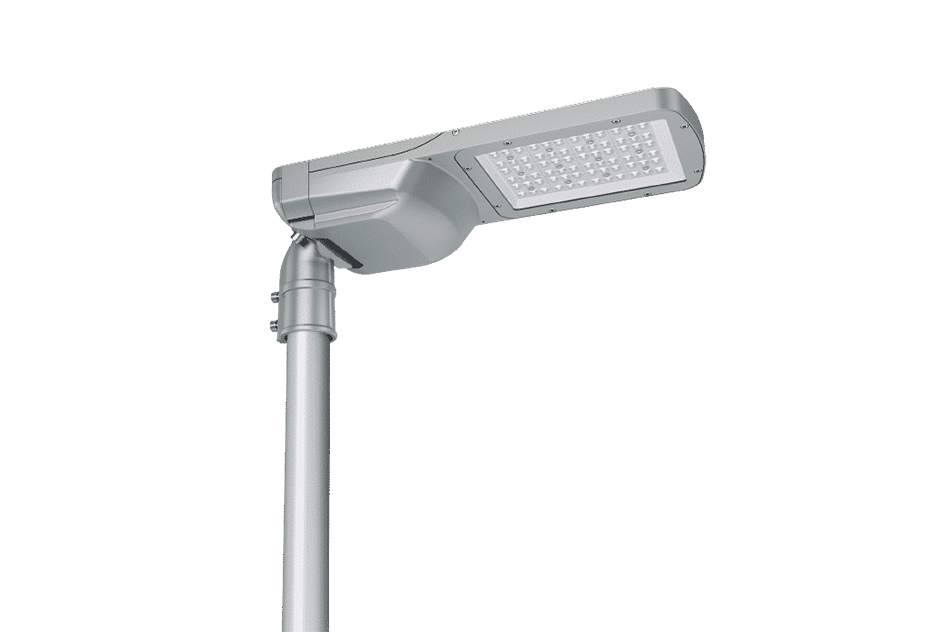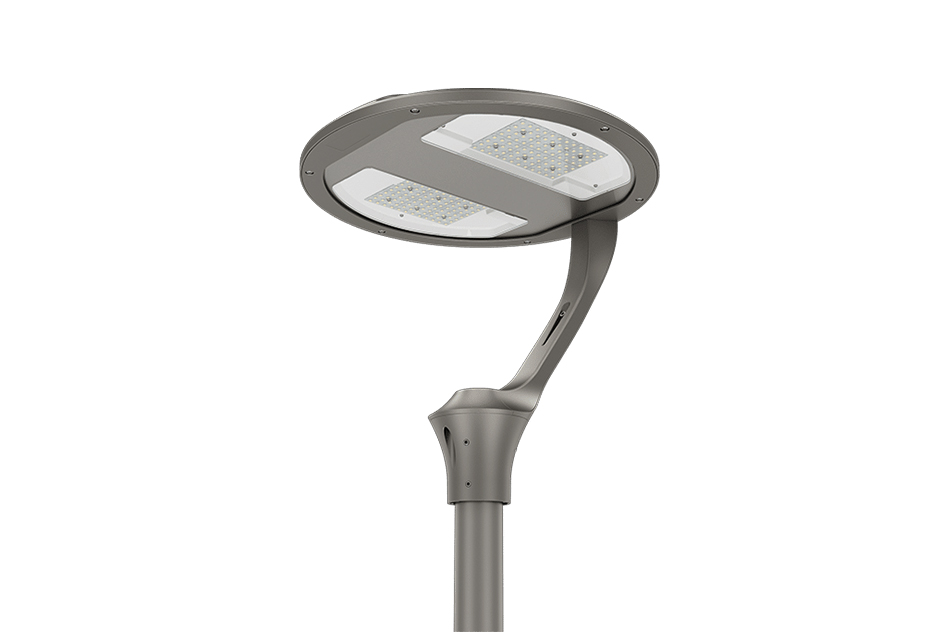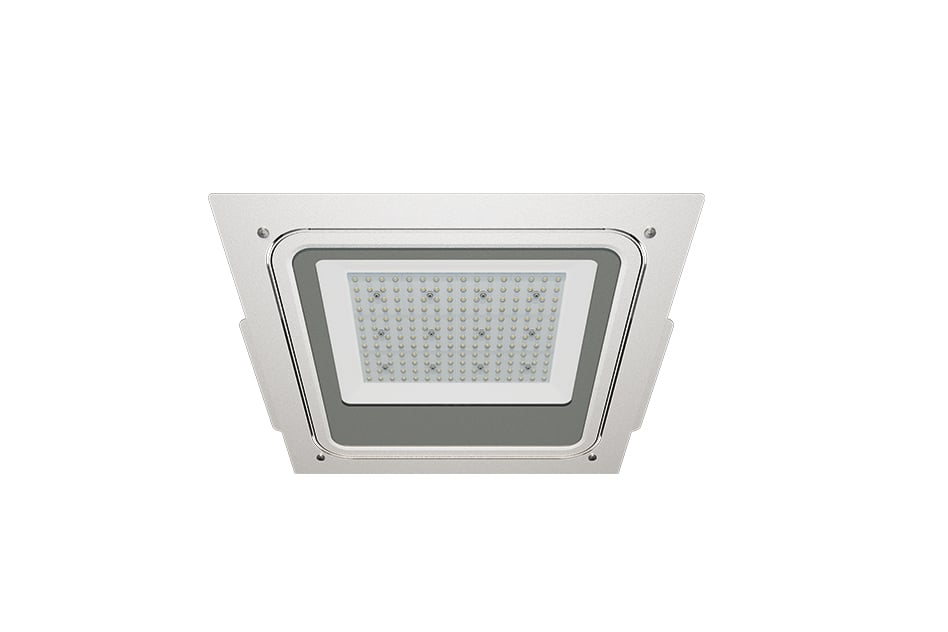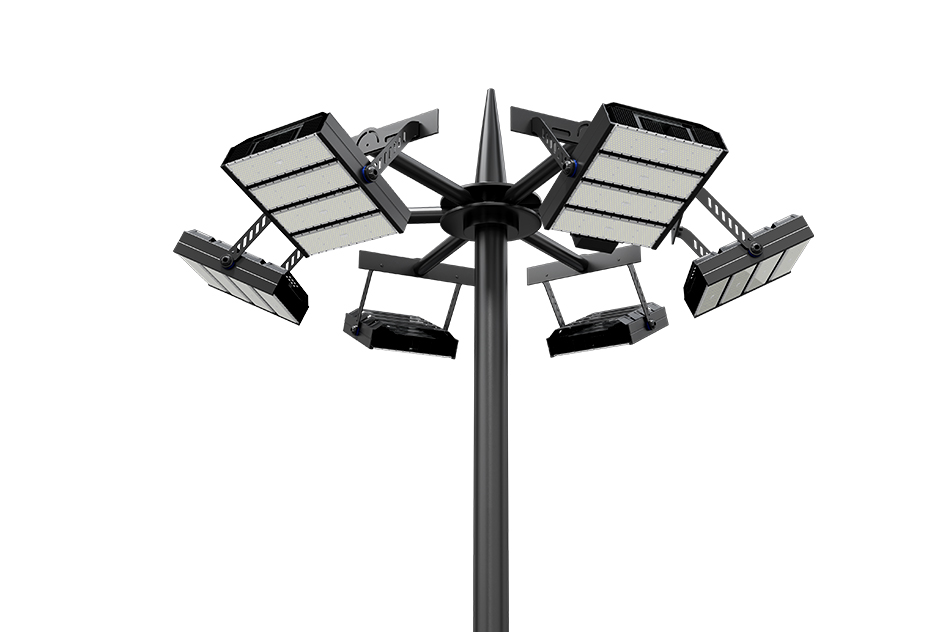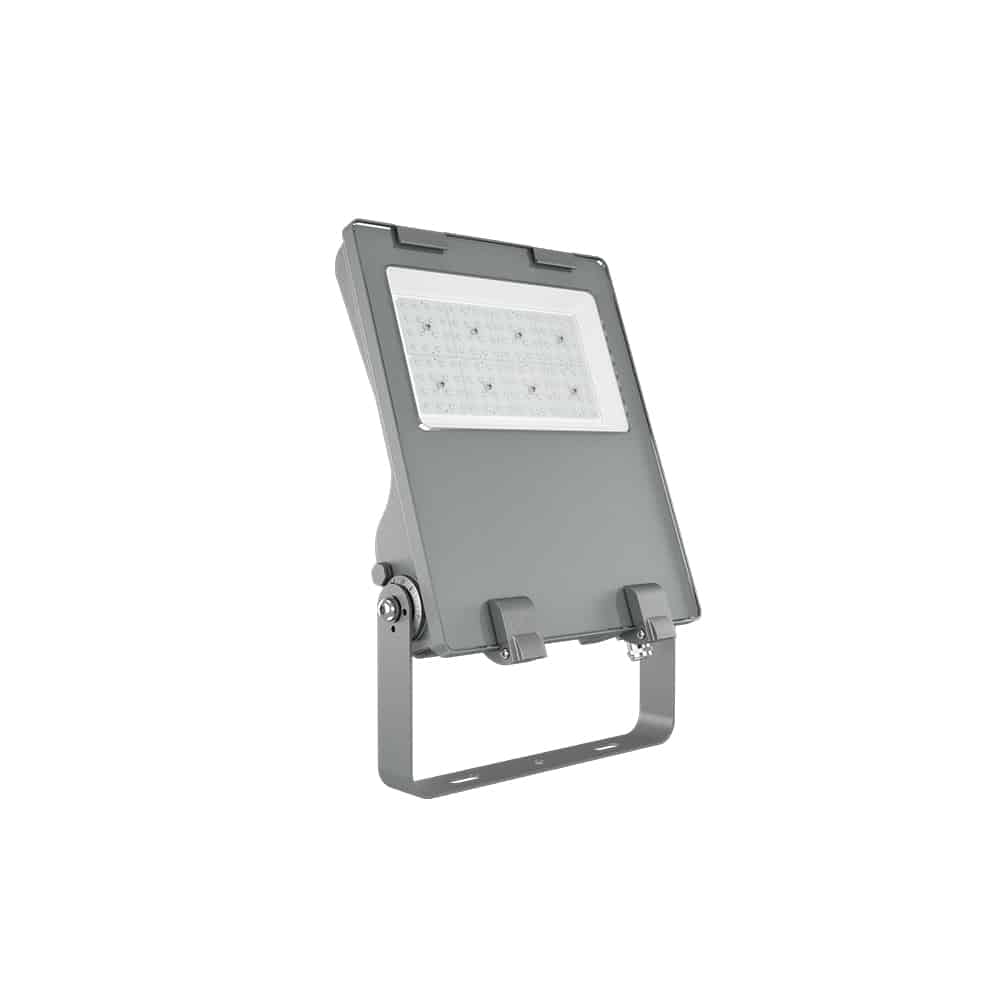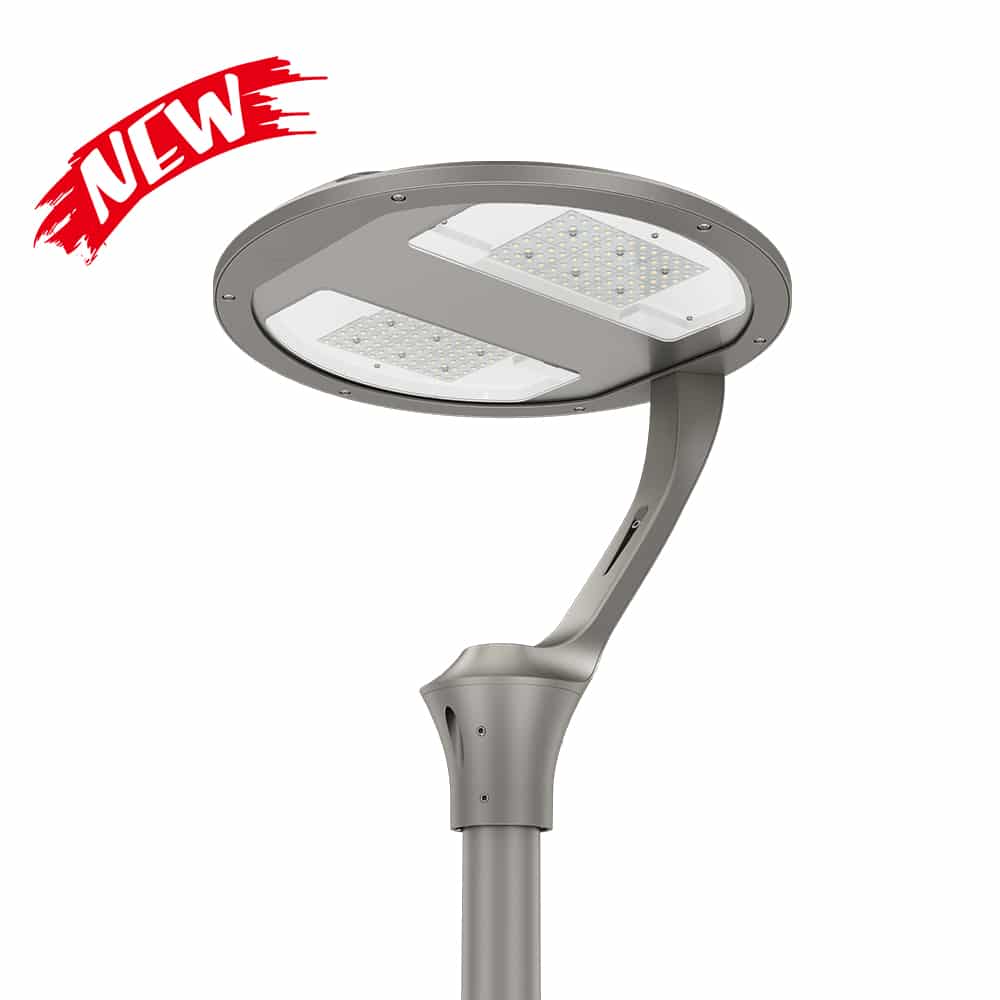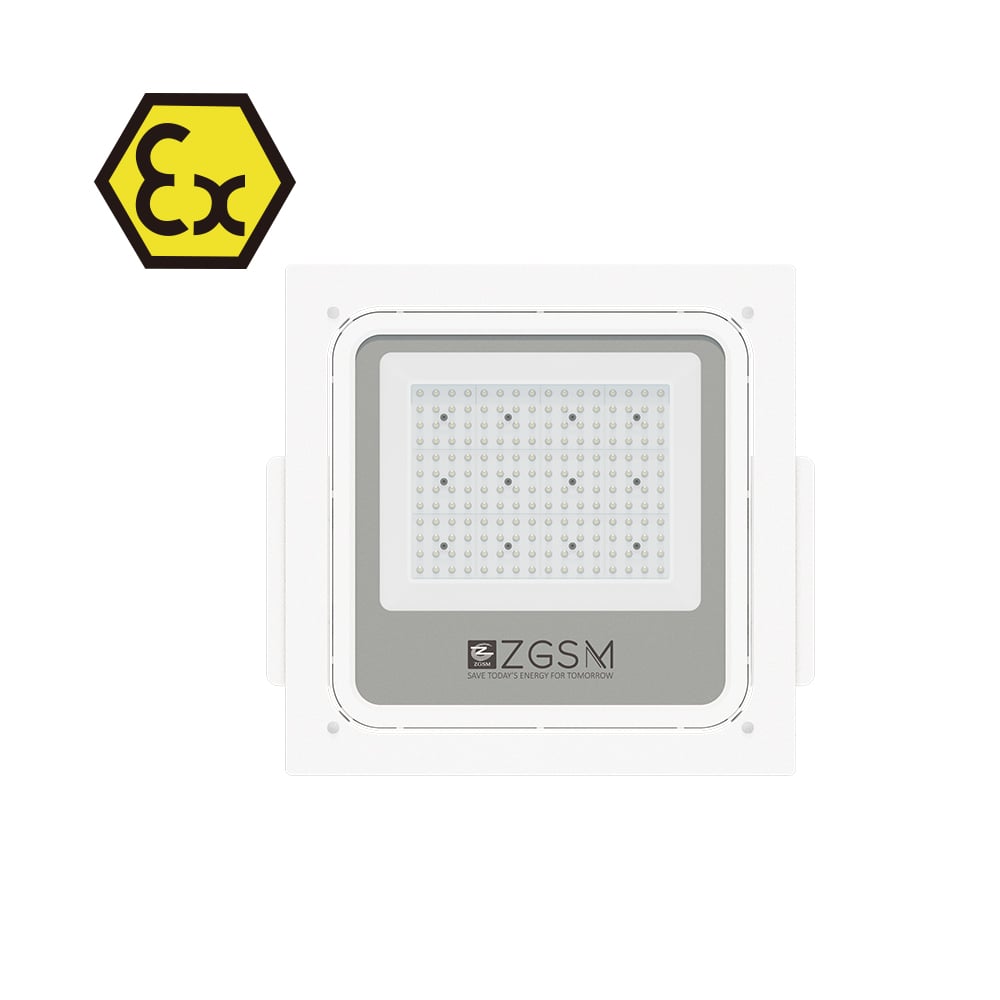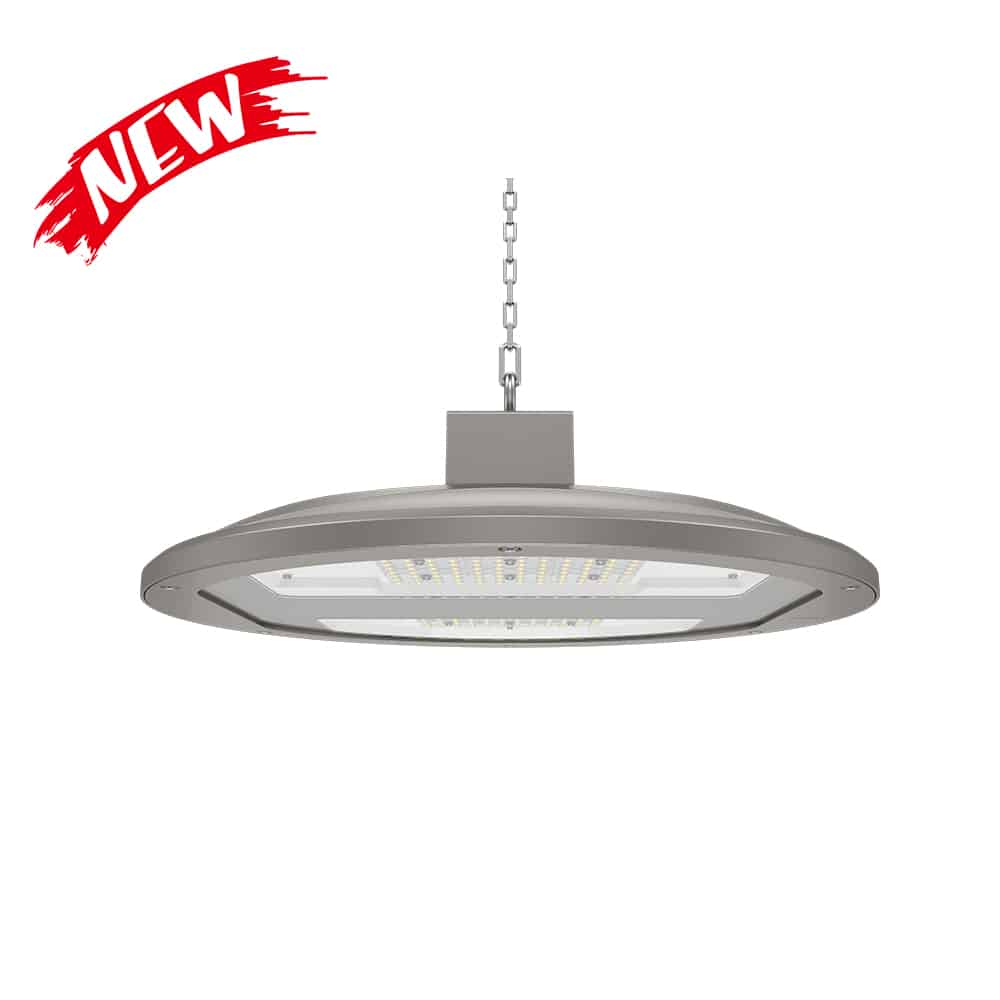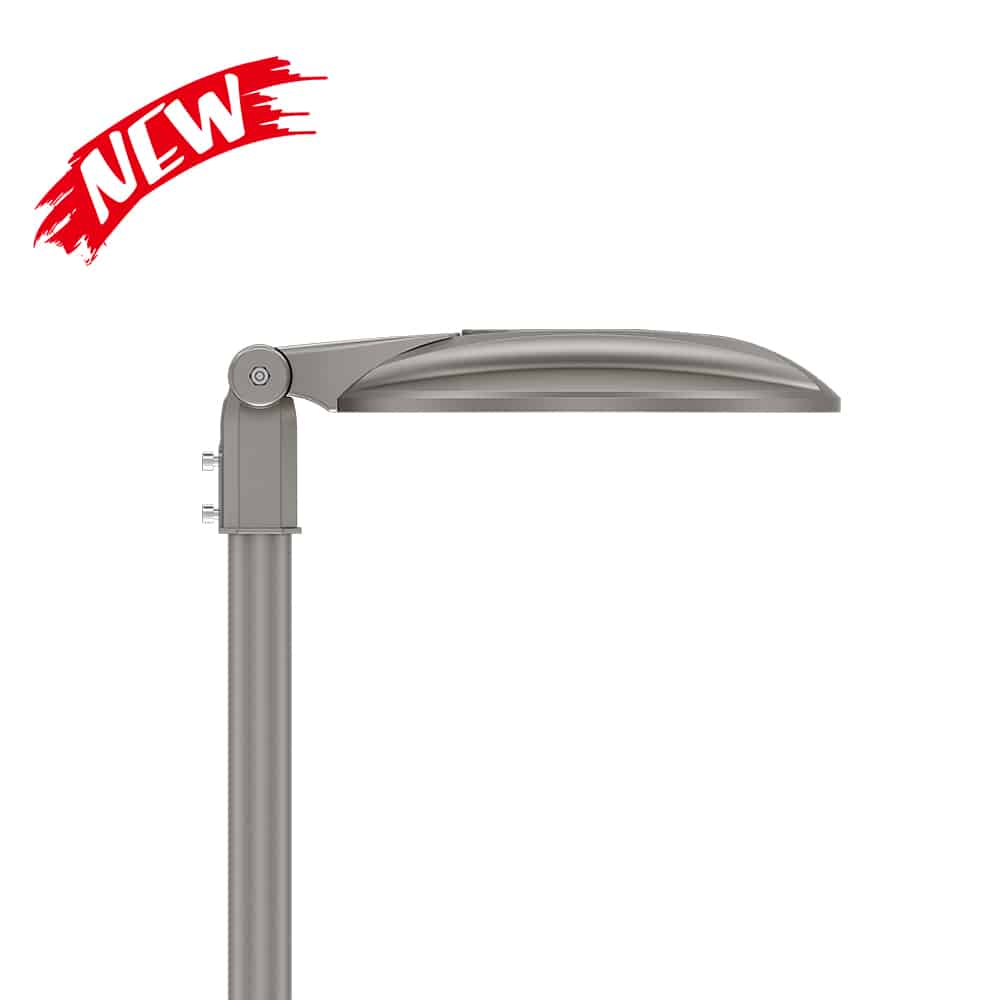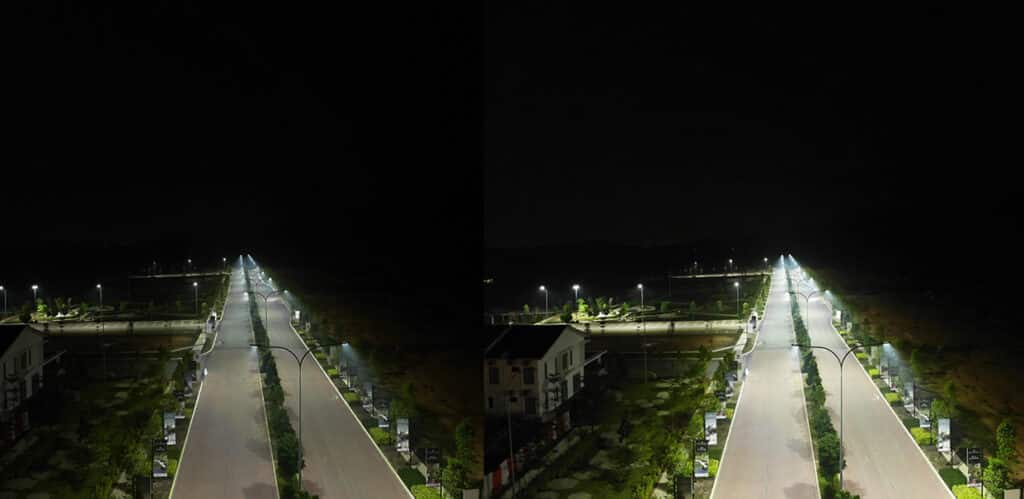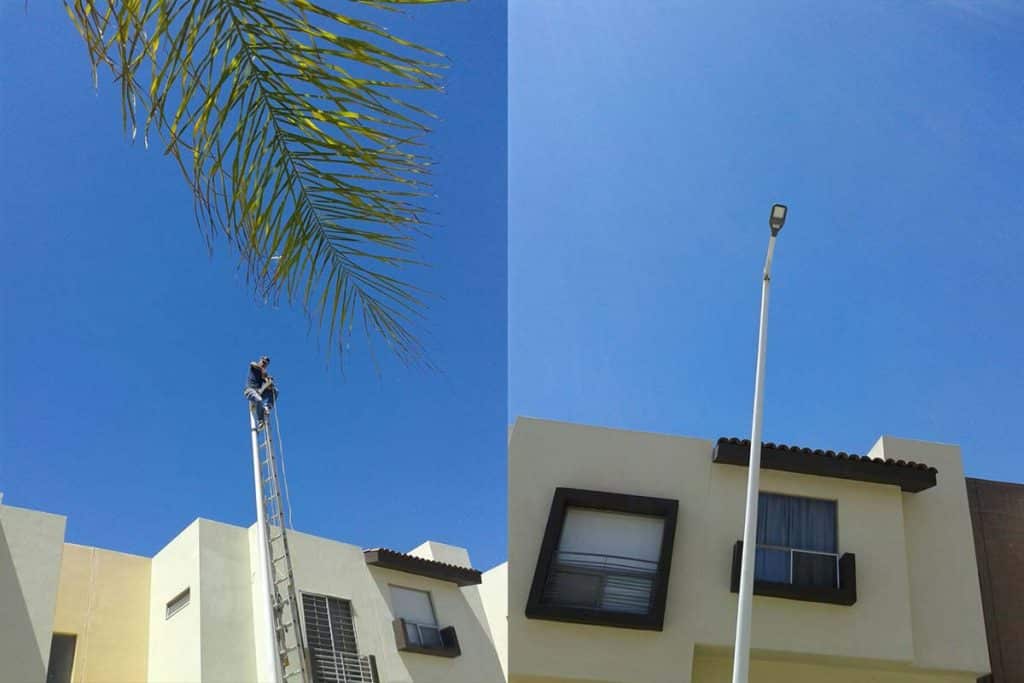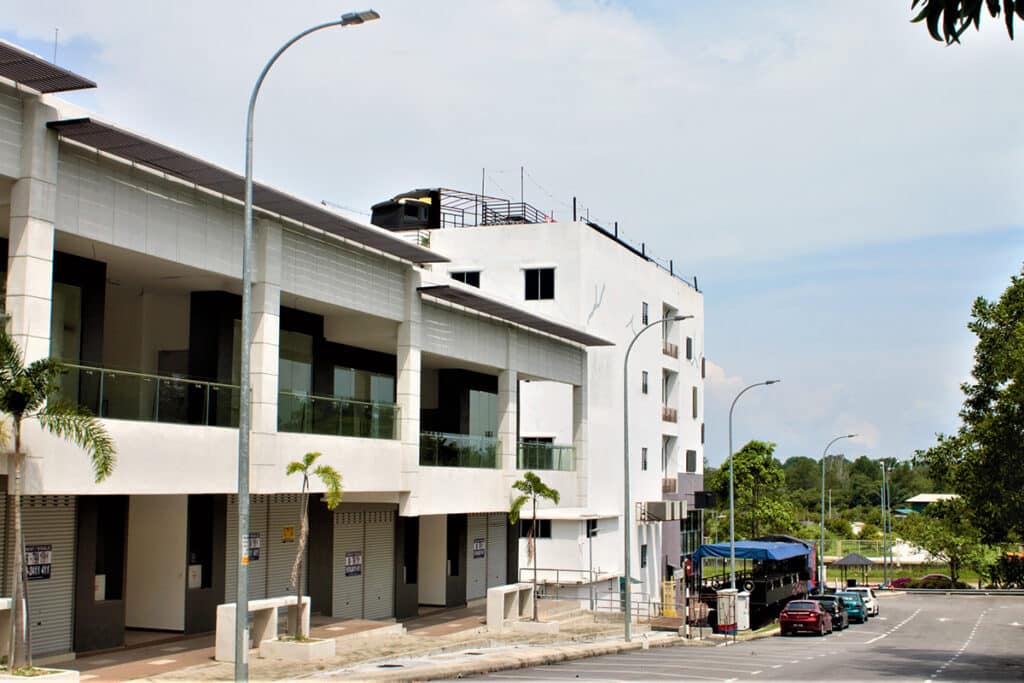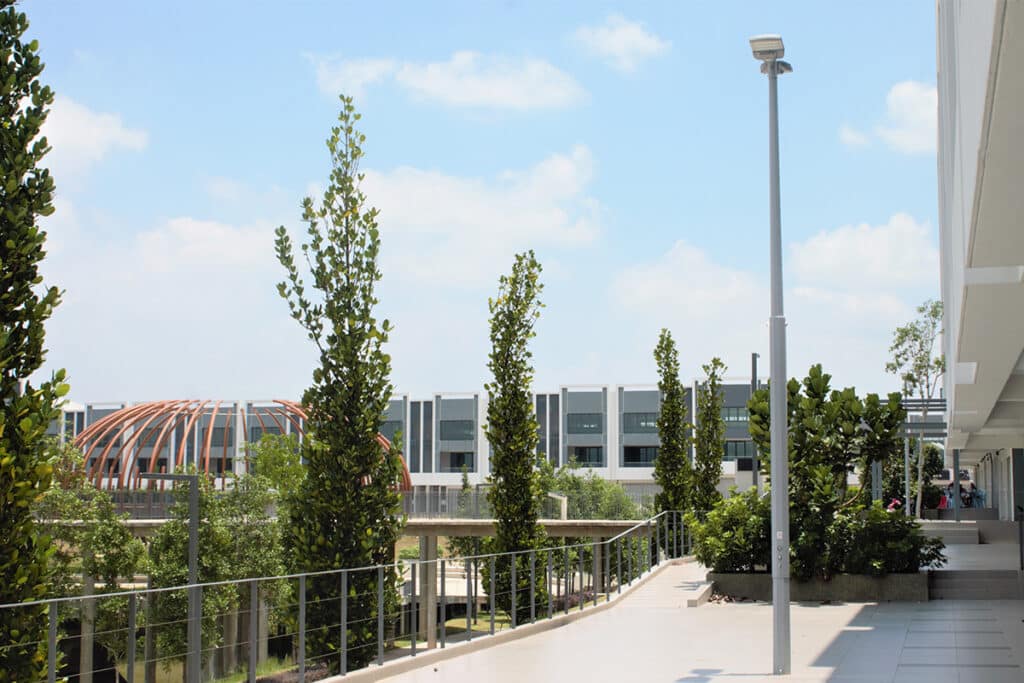Light decay and constant lumen output
Light decay and constant lumen output
Introduction
In recent years, LED technology has significantly matured and developed. Like traditional lighting fixtures, LED fixtures also experience the phenomenon of light decay(lumen depreciation), which is an important indicator of the LED fixture’s lifespan. For instance, we often hear about LED street lights with L70>100000hrs, indicating that after 100,000 hours of use, the luminous flux of the LED street light will decrease to 70% of its initial output. Traditional lighting fixtures typically have a L70 value of approximately 10,000 hours, indicating that LEDs have a significantly slower light decay rate than conventional lighting. Despite the slow light decay rate of LEDs, the effect of light decay on lighting efficacy must still be considered. People have utilized “constant lumen output” or “output lumen compensation” to maintain illumination quality and consistency. This technique entails increasing the power or current supplied to the LED fixture so that its luminous emission remains consistent with its initial output over a specified period of time. By employing this technique, LED lighting fixtures can maintain a consistent light output, thereby meeting the visual needs of a variety of locations, including roads, sports fields, and factories.
What’s light decay(lumen output degradation)?
The light decay(lumen depreciation) of LED street lights is the gradual reduction in light output capacity over time. Also referred to as “luminous flux decay.” This phenomenon is caused by the gradual deterioration of LED chips over time, which includes the aging of the light-emitting components, the damaging effects of heat on these components, and numerous circuit-related factors (such as decreased power supply efficiency). In addition, environmental factors such as humidity, high temperatures, and corrosive substances can speed up the light degradation of LED chips. All of these elements contribute to the progressive dilution of the light output of LED fixtures ( Why we shall pay attention to light output degradation? ).
Light decay(lumen depreciation) is one of the essential indicators used to measure the lifespan of LED lighting fixtures, typically measured in units of time. The light decay rate is often expressed as a percentage per thousand hours. For example, if ZGSM’s Rifle street light has an L70>100000hrs, it means that the light decay rate of the Rifle street light is 0.3% per thousand hours, as referenced in the LM80 report. Relevant reports also include the IEC62722 report. For instance, in the IEC62722 report, after undergoing 6000 hours of testing, the average luminous flux of the fixture is maintained at 98.5%. In this case, we would consider the light decay rate of the Rifle street light to be 0.25% per thousand hours. For LED street lights, controlling light decay is crucial, as these lights often need to operate continuously for extended periods. ZGSM accomplishes this by utilizing high-quality LED chips, driving them with low current, employing an effective heat dissipation design, and utilizing high-quality LED drivers to reduce the effect of light decay on the performance of LED fixtures. Btw, regular maintenance and inspection of LED fixtures can also help to slow down the light decay rate.
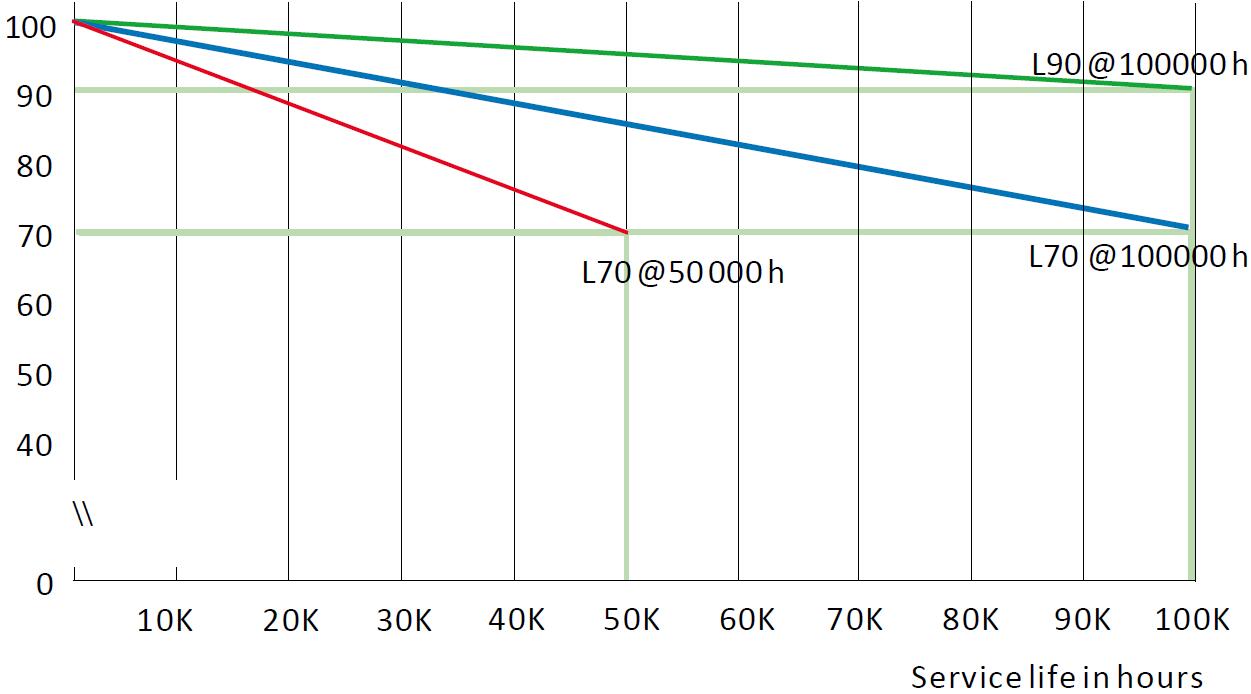
What’s constant lumen output?
During the usage of LED fixtures, there is a phenomenon of light decay where the light output efficiency gradually decreases with increasing usage time. To ensure that LEDs always provide stable brightness and lighting performance, constant lumen output technology is introduced. Constant lumen output for LED street lights (also known as output lumen compensation) is a technique aimed at gradually increasing the wattage of the LED fixture during its usage to compensate for the light output attenuation caused by light decay, thereby maintaining a stable light output.
Constant lumen output is typically achieved by modifying the output current of the LED driver. The driver circuit incorporates a timer that adjusts the LED’s drive current based on a pre-defined light decay compensation curve (time vs. current curve). In this way, even though the light output of the LED fixture may gradually decrease over a certain period, the constant lumen output feature ensures that the output remains within the expected range.
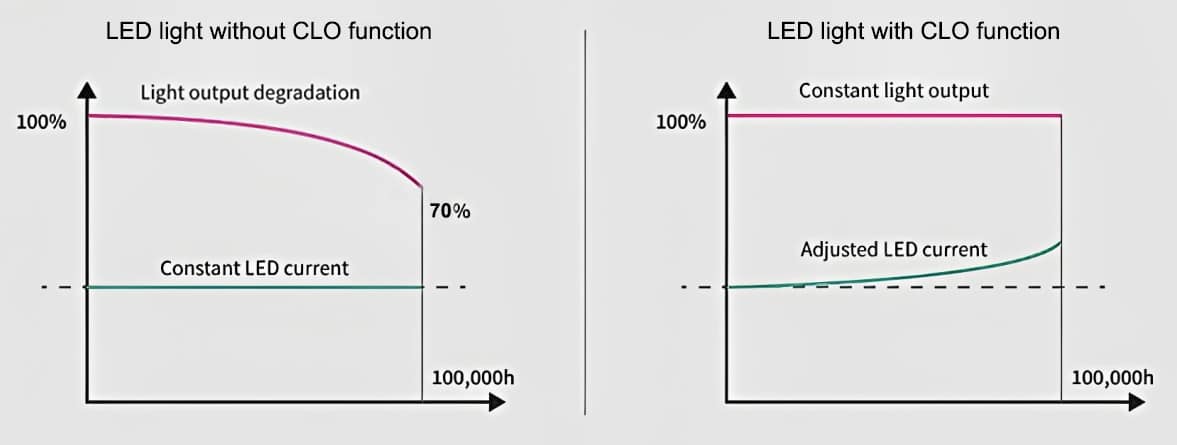
Why using constant lumen output?
The LED lighting system’s reliability and long-term performance are ensured through the use of constant lumen output function, providing enduring high-quality illumination. Additionally, it offers the advantages of energy savings and reduced maintenance costs.
Energy Savings: based on the knowledge presented in the previous sections, we know that output lumen compensation can adjust the drive current appropriately as the light output of LED fixtures gradually decreases due to light decay, ensuring that the illumination level meets the corresponding requirements. This means that LED fixtures do not need to maintain excessively high wattages during the early stages of their lifespan (avoiding excessive light output) to meet illumination requirements at the end of their life. Instead, the light decay compensation function gradually increases the wattage of the fixtures to maintain the illumination level at different periods. The following graph visually demonstrates the energy savings, represented by the green portion.
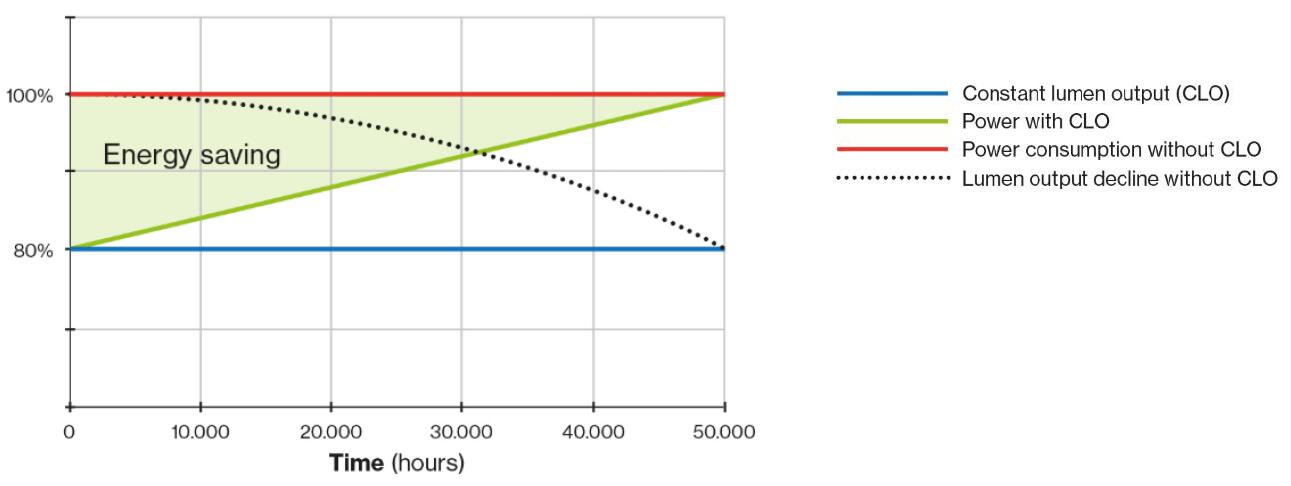
Ensuring illumination requirements: During lighting simulations, we need to consider the impact of light decay on the Maintenance Factor. Through the use of output lumen compensation, we can assume that the luminous flux of LED fixtures remains constant throughout their entire lifespan. This ensures that the fixtures can meet the illumination requirements at different stages of the project cycle (beginning, middle, and end). During the initial phase of the project, the fixtures’ lower wattage is sufficient to meet the corresponding illumination needs. In the middle and final phases of the project, the wattage of the fixtures is increased through light decay compensation to offset the decrease in illumination caused by light decay.
Extended fixture lifespan: Generally, higher wattage in fixtures results in more energy being converted into heat, leading to increased heat generation. Overheated fixtures can accelerate the aging of LED chips. Constant lumen output technology ensures that the wattage of fixtures throughout the project cycle is lower than that of fixtures without output lumen compensation. This slows down the aging process of LED emitter components, avoiding a shortened fixture lifespan due to excessive light decay. Moreover, stable light output helps to prolong the lifespan of LED fixtures, reducing frequent maintenance and replacement of light sources caused by light decay, and consequently lowering maintenance costs.
How to realize constant lumen output?
LED fixtures generally achieve light decay compensation through two methods: feedback control and pre-programmed compensation curves.
Feedback control is a relatively complex principle that requires the fixture to be equipped with sensors to regularly measure the ambient light intensity during the night. Based on the measured light intensity, the LED’s light decay condition is inferred. When the fixture detects light decay, it adjusts the current or power accordingly to maintain a constant light output. This method requires high sensor accuracy and the elimination of other factors that may affect its detection, making it less commonly used.
The other method involves using pre-programmed compensation curves within the fixture to achieve constant lumen output. The basic principle is that the light decay of LED fixtures is measured and recorded in advance, based on which a compensation curve is plotted (as shown in the figure below). The compensation curve guides the fixture on how much compensation to apply (by altering the LED chip’s drive current to increase the wattage of the fixture) at different working times or stages of its lifespan.
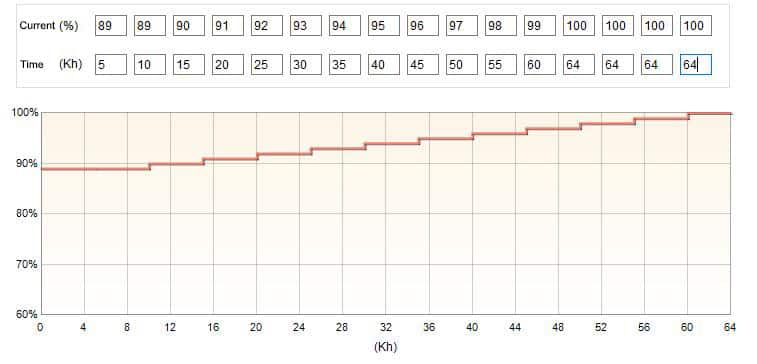
There are various sources that can be referenced for compensation curves of constant lumen output, such as the light decay curve (L70) in TM21 and the light decay curve in IEC62722. ZGSM provides TM21 reports and IEC62722 reports (as shown in the figure below). As the LED fixtures are used over time, the control system automatically adjusts the LED’s operating parameters based on the compensation curve to achieve output lumen compensation. These methods finally and effectively extend the lifespan of LED fixtures, maintain their stable light output, and provide more consistent lighting effects.

ZGSM lighting solutions with constant lumen output
Summary
In this article, we mainly introduces what is the light attenuation of lamps and the application of constant lumen output function in LED lamps. We can see that the output lumen compensation function is easy to implement and plays a vital role in LED street lights, flood lights and other lighting systems. It can not only ensure that the lighting effect meets the requirements, but also help save energy and reduce operation and maintenance costs. In addition, it also helps to prolong the life of lamps, which makes the output lumen compensation function widely introduced by users. For them, LED lamps with constant lumen output provide them with a more stable and reliable lighting solution. Contact us for getting more details about constant lumen output.
Rated Products
Related Blogs
Related Cases
People also ask
Author introduction

Hello Customers,
My name is Taylor Gong, I’m the product manager of ZGSM Tech. I have been in the LED lights industry for more than 13 years. Good at lighting design, street light system configuration, and bidding technology support. Feel free to contact us. I’m happy to provide you with the best service and products.
Email: [email protected] | WhatsApp: +8615068758483

